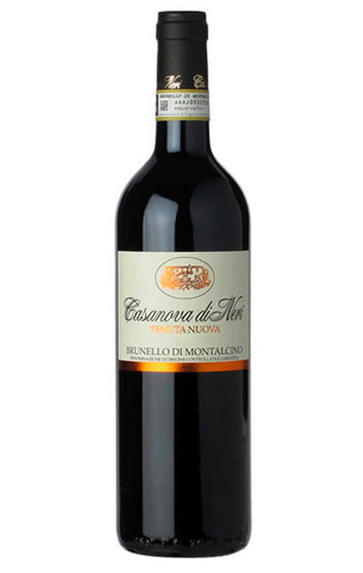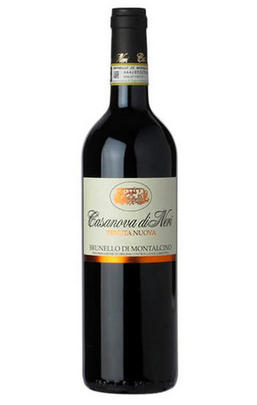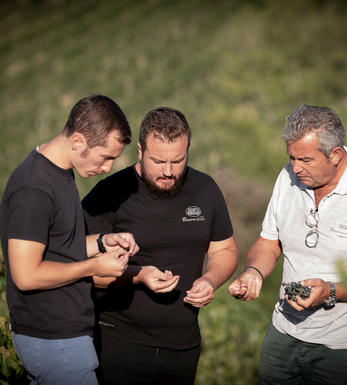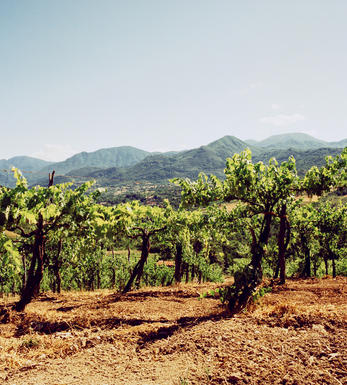
2017 Brunello di Montalcino, Tenuta Nuova, Casanova di Neri, Tuscany, Italy

Critics reviews
The 2017 Brunello di Montalcino Cascina Nuova lifts up with a layered display of peppery herbs, musky plums, black raspberry, crushed stone, tobacco and smoke. It’s silky yet juicy, pliant and staining to the senses, offering violet and lavender tones balanced by cooling acids and hints of candied citrus. The 2017 really plays with the palate; it’s spicy, long and intense, and lightly structured yet classically dry. Balsamic herbs, salted licorice – it goes on and on like a spice box menagerie. An elegant pleasure bomb.
Drink 2024 - 2029
Eric Guido, vinous.com (Nov 2021)
This is one of my all-time favorite Brunellos, and although personal tastes are fluid and may change from time to time, there is something timeless and solid about this wine. It's like a touchstone. The Casanova di Neri 2017 Brunello di Montalcino Tenuta Nuova is graced with a similar interlude of elegant rose or crushed flower that we saw in the annata wine. It appears more prominently here, and with more shape and focused intensity. Make no mistake, Giacomo Neri builds wines for pleasure and sensual impact, and this wine (helped by a hot growing season and 15% alcohol) ticks all those boxes. But it also shows floral elegance and sour cherry freshness that defies our expectations of the vintage.
Drink 2024 - 2044
Monica Larner, Wine Advocate (Feb 2022)
Expressive, complex and long, despite its compact profile today. Delivers black cherry, blackberry, violet, mineral and tobacco flavors that prevail, while assertive yet refined tannins leave their mark on the lingering finish. Best from 2025 through 2042. 4,083 cases made,
Bruce Sanderson, Wine Spectator (Mar 2022)
Lots of red plums and cherries on the nose with a palate that has a full body, thick silky tannins and a fresh and flavorful finish. The tannins are in good balance against the ripe fruit. Fresh and transparent at the end. Drink or hold.
James Suckling, jamessuckling.com (Nov 2021)
Tenuta Nuova hails from Casanova di Neri’s Le Cetine vineyard in Montalcino’s south. With a full southern exposure from east to west, it is a sun soaked, Mediterranean expression of Brunello. The 2017 takes a bit of coaxing at first but then cherry bark, cinnamon, liquorice root and gardenia arise from the glass. Upfront, gritty tannins dissolve slowly into a fine dusty powder, revealing supple, round black currants. Citrussy acidity keeps this lively while dark chocolate and mint notes linger.
Drink 2023 - 2029
Michaela Morris, Decanter.com (Nov 2021)
About this WINE

Casanova di Neri
Casanova di Neri are one of the region’s foremost producers of a more modern or international style of Brunello. Characterised by rich, unctuous, dark fruit and of cool, fine tannins and succulent yet refined oak framing the wine beautifully.
Tenuta Nuova is a single vineyard wine selected from one very special part of their seven vineyards. The family’s intention was to encapsulate as closely as possible the unique terroir and microclimate that this special vineyard enjoys.
Something is clearly working very well here, as the wine is hugely popular around the world but its level of critical acclaim is hugely consistent: it not been scored less than 95 points by The Wine Advocate since before 2010.
James Suckling, who largely made his name with his analysis of the region many years ago, has only once dipped below 95 points over the same period.

Brunello di Montalcino
Along with Chianti, Brunello di Montalcino is Tuscany's most famous DOCG and the region's boldest expression of Sangiovese. Located 30 miles south of Siena with the hilltop town of Montalcino as its epicentre, its 2,000 hectares of vines are naturally delimited by the Orcia, Asso and Ombrone valleys. Brunello is the local name for the Sangiovese Grosso clone from which Brunello di Montalcino should be made in purezza (ie 100 percent).
The Brunello di Montalcino DOCG has a whale-like shape: at its head, at 661 metres above sea level on ancient, stony galestro soils facing east and southeast lies the town of Montalcino, where the DOC was founded. As you follow the spine south towards the tail, the vineyards lose altitude – those around Colle Sant'Angelo are at 250 metres – while the soils become richer with iron and clay. Further east, in the shadow of the 1,734 metre Mont'Amiata lies the village of Castelnuovo dell'Abate where the vineyards are strewn with a rich mix of galestro, granitic, volcanic, clay and schist soil types.
Historically, the zone is one of Tuscany's youngest. First praised in 1550 by Leandro Alberti for the quality of its wines, it was Tenuta Il Greppo who bottled the inaugural Brunello di Montalcino in 1888. By 1929, the region had 925 hectares of vines and 1,243 hectares of mixed crops, while in 1932 it was decreed that only those wines made and bottled within the commune could be labelled as Brunello di Montalcino. Since then, the number of producers has risen from 11 in 1960 to 230 in 2006, while over the same period the vineyards have expanded from 1,000 hectares to 12,000. The region earned its DOC in 1966, and was upgraded to DOCG in 1980.
Brunello di Montalcino cannot be released for sale until five years after the harvest, or six years in the case of Brunello di Montalcino Riserva. During this time the wines should be aged for at least two years in oak, followed by at least four months in bottle (six months for Riservas); maximum yields are 55 hl/ha.
Rosso di Montalcino is declassified Brunello di Montalcino, released for sale 18 months after the harvest.
Recommended producers: Costanti, Fuligni, Lisini, San Giuseppe, Soldera, Cerbaiona

Sangiovese
A black grape widely grown in Central Italy and the main component of Chianti and Vino Nobile di Montepulciano as well as being the sole permitted grape for the famed Brunello di Montalcino.
It is a high yielding, late ripening grape that performs best on well-drained calcareous soils on south-facing hillsides. For years it was blighted by poor clonal selection and massive overcropping - however since the 1980s the quality of Sangiovese-based wines has rocketed upwards and they are now some of the most sought after in the world.
It produces wines with pronounced tannins and acidity, though not always with great depth of colour, and its character can vary from farmyard/leather nuances through to essence of red cherries and plums. In the 1960s the advent of Super Tuscans saw bottlings of 100% Sangiovese wines, as well as the introduction of Sangiovese/Cabernet Sauvignon blends, the most famous being Tignanello.


Buying options
Add to wishlist
Description
An expressive nose of ripe red cherries and plums, sweet spice and blood orange peel jump out of the glass. On the palate it has a rich mouthfeel with taught ripe tannins and a great backbone of acidity, that envelope a myriad of aromas that carry through from the nose. Crushed rose petals and herbal notes linger on the finish. This wine has a real freshness to it that belies the heat of the vintage. Approachable in the next couple of years but certainly one that will age beautifully too. Extremely enjoyable. Drink 2024-2040.
wine at a glance
Delivery and quality guarantee